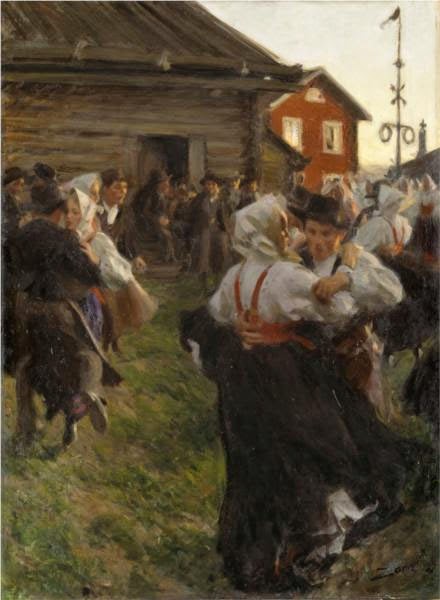 |
Lucretia Borgia Reigns in the Vatican in the Absence of Pope Alexander VI, 1908-14, by Frank Cadogan Cowper, recreates a scandalous incident in the life of Lucrezia Borgia. In 1501, she took the place of her father, Pope Alexander VI, at a Vatican meeting. The artist uses a humble priest kissing Lucrezia’s feet to indict the church’s worldliness. |
My friend K Dee recently put together a photostream of portraits of women to “help me remember, in case I ever start to forget, which sort of female image I find reflects a healthy civil society, and which I do not.”
Lucrezia Borgia was the daughter of Pope Alexander VI and one of his many mistresses, Giovanna de Candia, contessa dei Cattanei. Very little of what we think we know of her is proven, but her legend has been enduring.
 |
Portrait of a Woman, early 16th century, by Bartolomeo Veneto, is assumed to be a portrait of Lucrezia Borgia. |
By our standards, Italian Renaissance society was remarkably tolerant, for the Pope openly acknowledged Lucrezia and her siblings. Then again, the Borgias treated the church like their private fiefdom and power base. And as liberal as the Italian Renaissance was about sexual matters, the Borgias stood out as libertines.
Lucrezia was described as having all the attributes of a Renaissance beauty—a long neck, long blond hair, an ethereal carriage. Her father wasn’t averse to horse-trading for her. As the Borgia family’s fortunes rose, one engagement and then another was made and broken, starting when she was 11 years old. She was married at the age of 13, to Giovanni Sforza, Lord of Pesaro and Count of Catignola. His usefulness to the Borgias soon ended, however, and the Pope quietly ordered his execution. Lucrezia apparently hadn’t yet grown into her Borgia soul: she warned him and he fled Rome.
Sforza refused a divorce and accused Lucrezia of incest with her brother and father. The Borgias responded by alleging the groom was impotent. They of course held the power, and the marriage was annulled.
Lucrezia was probably pregnant at the time of this annulment—perhaps by her husband, perhaps by the chamberlain in her father’s household. She retired to a convent, and a Borgia child was born that year. Meanwhile, the body of the chamberlain and a maid were found in floating in the Tiber. The child, Giovanni, was presented to society as her half-brother.
 |
Portrait of a Youth, c. 1518, by Dosso Dossi, is also presumed to be a portrait of Lucrezia Borgia. If so, it was painted at the end of her life. It radiates exhaustion and cynicism. |
In order to strengthen ties between the Vatican and Naples, Lucrezia, now 18, married Alfonso of Aragon, 17. “"He was the most beautiful youth that I have ever seen in Rome,” wrote a contemporary. Soon, the twisting ties of Alexander’s allegiences made Alfonso a liability. The young man fled Rome. Lucrezia’s family ordered her to lure him back. They returned to the Vatican, where Lucrezia gave birth to their son. Alfonso was attacked by hired killers on the steps of St. Peter’s Basilica; he barely survived this attack only to be strangled in his sickbed.
Two years later Lucrezia was given in marriage to Alfonso I d'Este, Duke of Ferrara. To pull this off, she pretended she was a virgin. Little Rodrigo was left behind and she never saw him again.
Oddly, this last marriage stuck. The couple had several children together and survived the fall of the House of Borgia following Alexander’s death. Both parties took lovers, but Lucrezia died giving birth to her eighth child at age 39, to all outward appearances a virtuous Roman matron of piety and good works.
Let me know if you’re interested in painting with me in Maine in 2014 or Rochester at any time. Click here for more information on my Maine workshops!















































